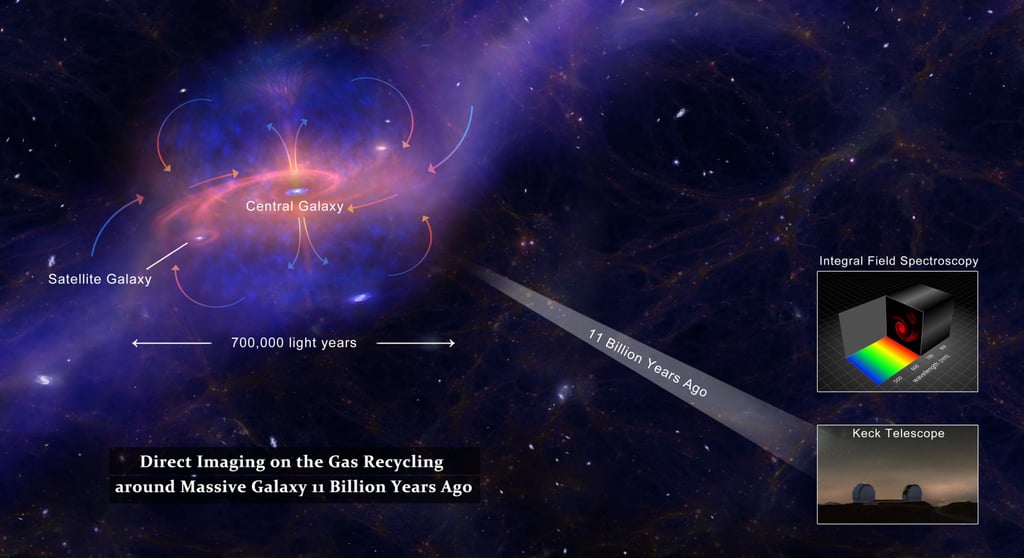How a galaxy feeds on its own gases to create new stars – and how a China-led team proved it
- Researchers say they built a 3D map plotting streams of expelled gas flowing back into a galaxy – rather than out as they had expected
- Doing so meant combining the power of sophisticated telescopes on the ground and in orbit

A China-led team has generated the first complete picture to show how a massive galaxy feeds on its own expelled gases to create new stars.
Using the most powerful optical telescopes on the ground and in space, researchers from China, the United States, Europe, and Japan observed a huge nebula known as MAMMOTH-1, and found that one of its galaxies was drawing in “inspiraling streams” of surrounding gas, as if drinking through spiral-shaped straws.
The team reported in the journal Science on Friday that materials with a mass of up to 800 suns – all of which were blown out of the galaxy through supernova explosions, solar winds and other violent activities – were sucked back into the galaxy every year.
Lead author Cai Zheng, from Tsinghua University in Beijing, said much more gas was being pulled in than used to create stars, suggesting star formation could continue long after.
“We estimated the galaxy’s star formation rate to be around 80 solar masses a year, so the recycled gas should provide enough materials to bake all the new stars over a long, long time,” Cai said.

Astronomer Bjorn Emonts, from the National Radio Astronomy Observatory in Virginia, said the findings confirmed that the far-off galaxy, whose light takes 11 billion years to reach Earth, did not grow in isolation but evolved with an enormous gas reservoir in which it was embedded.